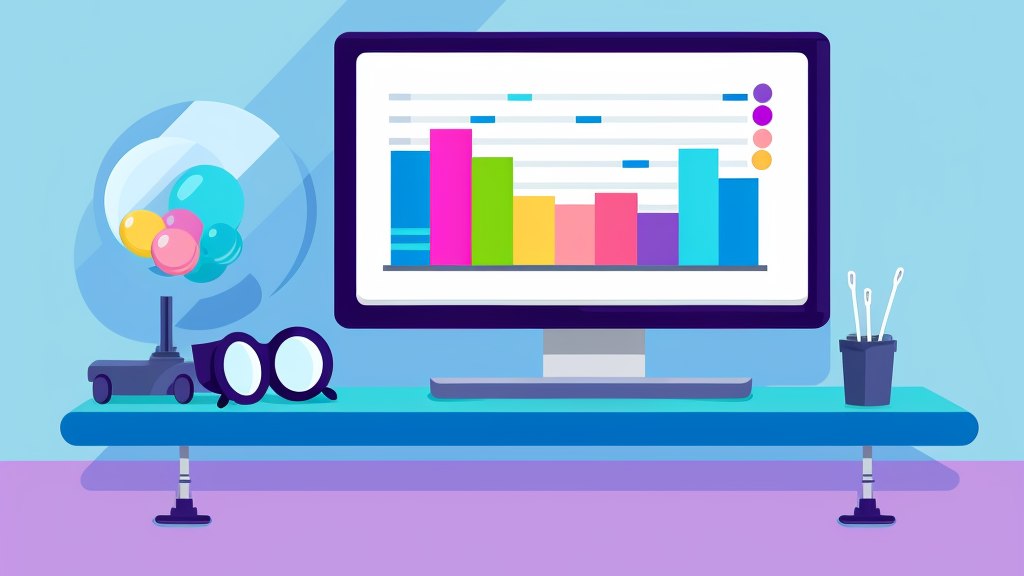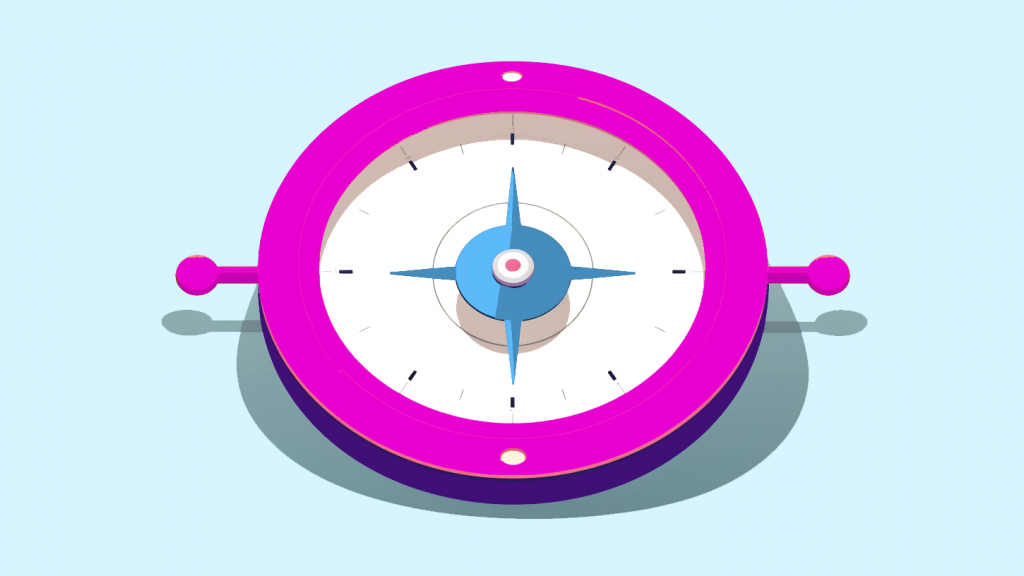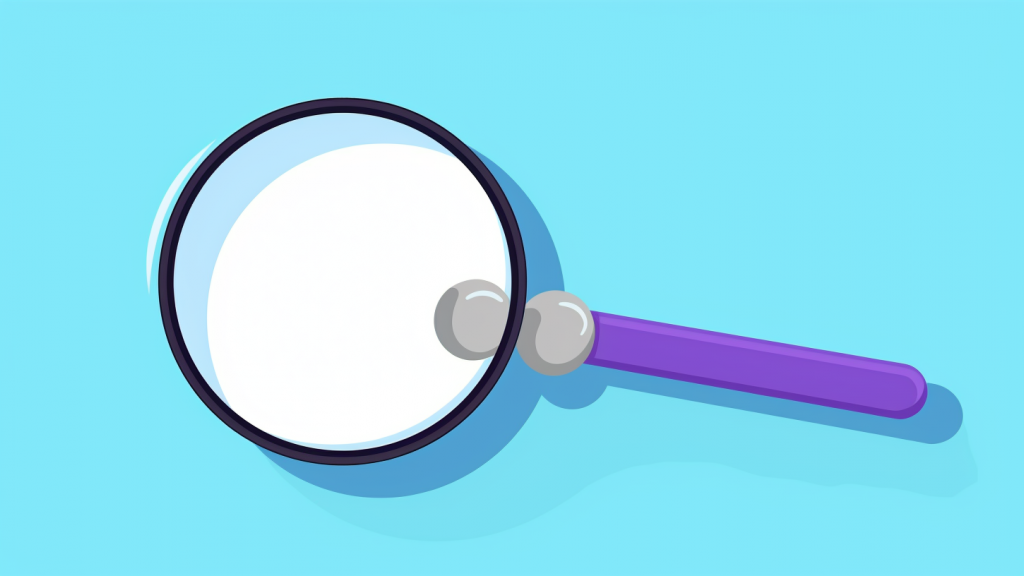
On the journey of improving your online presence, one may come across two terms: website redesign and website reskin. Understanding the difference is critical if your project is to meet its goals.
Table of Contents
In broad strokes, this article will cover:
- some ways to think about whether to completely redesign, or refresh/reskin a website;
- how to assess your site's performance and that of your competitors;
- when to reskin instead of a full website redesign;
- redesign cost factors;
- SEO considerations and best practices for not inadvertently killing SERP ranking;
- redesigning your website with customer journeys in mind;
Website Redesign
A website overhaul is a total redesign of the existing site. At Mythic, we often liken this process to completely restoring a classic automobile. Everything, from the engine to the paint job, is revamped. There are some key differences between a website and that antique car, however.
Automobiles can last longer than us humans (with proper care). Most websites, in contrast, have a lifespan of 2-10 years. And if your industry moves quickly, play to the shorter end of that range.
Has your company gone through a major corporate restructuring? Perhaps the website's architecture has become so unruly that day-to-day changes, even from an engineering perspective, take significantly longer than they should. The cost of new features starts to climb relative to their return.
No good.

Another example of when that classic website needs more than a tune up? Watch out for when your operating content management system (CMS) is no longer supported for security or maintenance. In this scenario, your site is likely to become vulnerable. To worsen the matter, this makes it harder to find a web designer, or even devs to work for you.
Mythic operates heavily with Drupal to manage content. It pushes potentially-important security updates on a weekly basis. That's why we pay careful attention to Drupal's security and updates schedule. Keep a close eye on your CMS’ security update cadence, as well.
Let's face it: outdated websites need a substantial change to meet current user needs and industry standards.
Website Reskin
In contrast, a website reskin (or refresh) is like giving that old car a fresh coat of paint, some new tires, and a light tune up on the engine so it runs and looks decent. It's a lighter, softer touch - focusing on improving visual elements, essential functionality and updating content without altering the core structure.
A reskin may be appropriate if your website is mostly aligned with your goals but needs a touch of modernity or brand alignment.
Clients are often pleasantly surprised at what an effectively applied, proverbial fresh coat of paint can do for the performance of your brand's digital presence. We specialize in helping clients make that call. Book a discovery session with me to find out more.
Goals can at times be achieved with much less cost than initially expected.
Like a unicorn trotting its way through the brush, Mythic breaks down your technical barriers, helping determine whether a redesign or reskin is the right approach for your unique vision.
Settle on your website redesign goals
Let's say you've decided to totally revamp that antique jalopy. Ask yourself, "why am I doing this?" Maybe you want to compete in old car shows, or just drive around on nice Sunday afternoons.
Determining your website redesign goals is also a critical step in the process. You've got a myriad of elements, possibilities, and choices at hand. Without a clear understanding of what you hope to achieve, it's easy to lose direction.
Understand Your Audience
Before you dive into a redesign, it's essential to understand your target customers and their needs. Are you aiming to attract new visitors, engage existing ones, or perhaps both? What problems do they face, and how can your website solve them?
Understanding these elements can guide the design to resonate with your potential customers and truly capture your magic.
Align with Business Objectives
Next, your redesign should line up with your overall business objectives. Are you looking to increase sales, improve brand awareness, or maybe enhance user experience? By defining clear and measurable goals, you help every element of the redesign to support your broader business strategy.

Analyze your current website performance metrics (and competitors)
Going over your existing website performance metrics (and competitors’) is an indispensable step when considering a redesign or reskin. Understanding where you stand helps in identifying areas for improvement and setting new goals. It's also good to check out some redesign examples of others in your industry.
I'd recommend starting by assessing your current website's strengths and weaknesses. There are some essential metrics to evaluate.
User Engagement: Are visitors staying, or do they bounce quickly from your website pages? Do you have a ton of broken links? How do they feel after using your site (are you asking?)?
Traffic Sources: Where are your visitors coming from? Search engines, social media, or direct links? Are you using Google Analytics, or a competitor to find out?
The idea is to know our own website as well as the essential aspects of our vehicle.
Conversion Rates: How well is your site turning visitors into customers or leads? If you're in retail and have an online store, are you meeting typical industry benchmarks for these key metrics?
Mobile Responsiveness: Is your site easy and intuitive to use on various devices?
By asking these questions and understanding these metrics, you gain insights into what's working and what needs attention.
Let your redesign shine and align with your unique vision.
Analyze Competitors' Performance
It's equally vital to understand how your website stacks up against those competitors. This analysis isn't about imitation but about recognizing industry trends and identifying opportunities to stand out. Consider the following aspects.
Design and User Experience: How does your site's design compare to competitors? Is it modern, engaging, and intuitive to use? Who is doing better in terms of compliance and accessibility, site security?
Content and SEO: Are your competitors ranking higher in search results? What keywords are they targeting? How do their mobile sites look compared to yours?
Social Media Presence: How active and effective are competitors on social platforms? What can you learn from their strategies?
I can’t give you the answers to the above, but knowing what questions to ask is often the hardest part of starting. With an analysis in hand, both of your performance metrics and those of competitors, you're better positioned to create a website that captures that essence - that je ne sais quoi?
Find out what is working on the current website
Before diving into a redesign or reskin, it's essential to find out what is working on the current website. While identifying areas for improvement is great, understanding what's already resonating with your audience is equally important.
Identify Key Strengths
In our work at Mythic, we believe that a successful redesign builds on existing strengths.
Consider the following:
🥇 Popular Content: Is there a certain landing page or specific blog posts attracting more visitors? Understanding what resonates with your audience helps you retain these elements.
💵 Conversion Paths: Are there specific pathways that successfully turn visitors into customers? Analyzing these can help maintain effective sales funnels.
🎙️Feedback: Sometimes, your audience can directly tell you what they love. Reviews, comments, or direct feedback can provide valuable insights. A new landing page may be useful here.
Utilize Analytics Tools
Leveraging analytics tools like Google Analytics helps you delve into user behavior and understand what's engaging your visitors. Metrics such as time spent on page, click-through rates, and user flow can highlight the successful aspects of your current design.
Research keywords and take care of redirects
When considering a website redesign or reskin, two often-overlooked (yet vital) steps are researching keywords and taking care of redirects.
Keyword research is all about understanding what your target audience is searching for online. By identifying the right keywords and their related clusters, you can get on the same page as them.
Align & Personalize Content - You can tailor your content to match what your audience needs and wants.
Improve SEO - Proper keyword usage helps in improving search engine rankings, driving more organic traffic to your site. You don't want cluttered web pages, keyword stuffing, or anything like that.
You do, however, want the right balance of readability for both human and robot audiences alike.
The Mythic team includes experts in finding that equilibrium across an entire site: identifying and integrating keywords that truly resonate with your audience, ensuring your new website aligns with your unique vision.
Take Care of Redirects
When redesigning a website, some URLs might change. It's essential to set up redirects from old URLs to new ones to:
Preserve SEO Rankings - Redirects ensure that the search engine value associated with old URLs is transferred to new ones.
Enhance User Experience - Do what you can to prevent visitors from landing on "404 Not Found" pages, directing them to the relevant new content instead. These kinds of small, but important details shouldn't be overlooked in any website redesign process.

Take inventory of your high-performing content
Take inventory of your high-performing content when planning to redesign or reskin your current site. Recognizing what's already working well ensures that you don't lose valuable assets that contribute to visitors' engagement and conversion.
Identify Content That Aligns with Strategic Objectives
Start by examining content that directly intersects with your business' goals. Look for pages, blog articles, or other elements that have shown success in areas like lead generation, customer engagement, or brand awareness. Understanding what jives with your audience helps in formulating a strategy that continues to support your objectives.
Analyze Site Visitors' Interaction
Utilize analytics tools to understand how audiences interact with your existing website. Metrics such as page views, time spent on the page, and user pathways can reveal what content is truly engaging your audience. By focusing on these high-performing areas, you can know that the redesign maintains the aspects that already connect with your visitors.
Integrate with Content Management System (CMS)
Inventorying high-performing content isn't just about identifying what works; it's also about knowing that it's appropriately managed and transferred in the redesign process. Integrating this content into your CMS means a more organized transition.
Whether you're using WordPress, Drupal, or another system, proper integration helps maintain the structure and SEO value of the content.
Consider Multi-Platform Performance
Lastly, assess how your high-performing content functions across different devices and platforms. In today's dizzyingly diverse digital landscape, making sure your content resonates with people regardless of how they access your site can’t be overlooked.
Taking inventory of your high-performing content isn't merely a preservation effort; it's a strategic move to build upon existing successes when one needs to undertake a website redesign.
By carefully aligning this content with your business goals, understanding user interaction, integrating with your CMS, and considering multi-platform performance, you set the stage for a website redesign that not only maintains but augments what's already working well on your site, as is.
Continue to connect with your audience effectively and drive those KPI's. Both your business and your website performance will thank you.
Design tips to improve website UX
Improving website UX (User Experience) is at the core of an effective online presence. You may not have yet decided to redesign your website, but this information will serve you either way.
With the right tweaks to the aesthetic and functionality, you can enhance the way visitors interact with your site, without undertaking an entire website redesign. Here are some design tips to consider:
Intuitive User Interface (UI) - An intuitive UI ensures that site navigation is straightforward and user-friendly. Simplifying menus and providing clear calls to action guide visitors through your site with ease.
Consistent Design Elements - Consistency in design such as fonts, color scheme, and buttons helps in building a cohesive brand image. It also aids site visitors in recognizing patterns, making navigation more comfortable.
Mobile Responsiveness - With an increasing number of users accessing sites via mobile devices, responsiveness is key. A skilled digital designer will create a design that looks and functions well on various screen sizes.
User-Centric Approach - Always design with the user in mind (it's fun to rhyme). Conducting tests, understanding your audience's needs, and working closely with a design professional ensures that the site resonates with your visitors.
By focusing on intuitive UI design, predictable and appealing design factors, mobile responsiveness, and an approach centered on potential clients, you'll significantly enhance the site's UX.
These tactics tend to solidify brand identity, creating rewarding and delightful interactions for your content consumers, reflecting professionalism and attentiveness to user needs.
12 steps of a website redesign project plan
The quest to redesign a website requires a well-structured plan and some serious consideration as to the user journey. Some of the items below are covered more in depth elsewhere in this article, but what follows is a comprehensive 12-step process to guide you through this complex undertaking:
1. Identify objectives
Determine the goals of the website redesign, synching them with your overall business strategies and target audience needs. Clearly defined objectives set the direction for the entire project, making sure that every decision aligns with your core mission.
2. Analyze what you have to work with
Evaluate the existing site while identifying strengths, weaknesses, and areas for improvement. This analysis helps in recognizing what's working well and what needs to be changed or enhanced to meet your goals.
3. Research competitors
Analyze competitors' websites to understand industry trends and identify opportunities for differentiation. You want this understanding of the competitive landscape to guide you in creating a unique value proposition and standing out in the market.
4. Define target audience
Understand your audience's preferences and pain points to guide the design process. Creating user personas and identifying their specific needs helps your team create a design that resonates with those you aim to reach.
5. Inventory high-performing content
Identify and preserve content that furthers your business goals and resonates with site visitors. This ensures that successful aspects of your website are maintained, contributing to the overall effectiveness of the website redesign.
6. Develop a content strategy
Create a content plan that includes new, updated, and repurposed content to match your audience's needs. A coherent content strategy enables you to deliver a consistent and engaging message across all pages.
7. Choose technology and tools
Select the appropriate CMS, design tools, and technologies that fit your project. Your choices here lay the technical foundation, making sure that the website redesign results in smooth functionality, and can be easily managed.
8. Create wireframes and more
Work with a web designer to develop wireframes and elements that add to ease of use and relevancy. This collaboration fosters a coherent visual language and creates a seamless, memorable user experience.
9. Develop the site
Build the site, ensuring that a responsive web design, user-friendly, and aligns with the agreed-upon design. This development phase transforms the vision into a functional website, ready for real-world usage.
10. Test the site
Conduct thorough testing on various devices and browsers to ensure everything works seamlessly. Testing uncovers any hidden issues, enabling corrections before the site goes live, thus saving potential headaches down the line.
11. Implement SEO and redirects
Incorporate SEO best practices and set up necessary redirects to preserve search engine rankings. This step ensures that the new site continues to attract organic traffic and maintains existing SEO value.

12. Launch and monitor
After a successful launch, continuously monitor the site, gather feedback, and make necessary adjustments. Ongoing analysis and refinement ensure that the site continues to meet user needs and aligns with evolving priorities.
I hope you found these redesign tips helpful. When one takes a thoughtful and methodical approach through these 12 steps, the website redesign process can become a smooth and successful endeavor.
Each stage builds upon the previous one, creating a cohesive and strategic process that leads to a website that resonates with your audience and supports your business' needs.
How ESR eliminates the epic website redesign
ESR, or Evolutionary Site Redesign, is a progressive approach to website design that focuses on continuous, incremental changes rather than complete overhauls. By applying ongoing tests and making data-driven decisions, ESR eliminates the need for epic website redesigns, which can be costly, time-consuming, and risky.
🥅 Aligns with Business Goals
The ESR process begins by squaring website changes with company goals and marketing strategy, driving every adjustment to be purpose-driven while adding to overall objectives. This alignment ensures that site enhancements are strategic and targeted, leading to more effective outcomes.
⚖️ Data-Driven Decisions
Rather than making sweeping changes based on intuition or trends, ESR relies on data and feedback from website visitors. Regularly analyzing site metrics and conducting user testing guides the decision-making process. This way, changes are based on real-world performance and people's needs.
🪜 Incremental Changes
By implementing incremental changes, ESR reduces the risk of alienating folks with drastic redesigns or a complete website overhaul. Gradual adjustments allow for ongoing testing and refinement, leading to a site that evolves with the audience's expectations and industry trends.
⚙️ Cost-Effective and Efficient
The ESR method is often more cost-effective and efficient than traditional redesigns. By focusing on continuous improvement rather than periodic overhauls, resources can be allocated more strategically, and the site can adapt more readily to changing conditions.
Returning to our antique car metaphor: Did you find that perfect replacement part for the engine, avoiding a more systemic overhaul? It helps, for sure. ESR is kind of like that.
Protect your search engine optimized pages
Understand the Importance of SEO Pages
Search engine optimized (SEO) pages are vital in driving organic traffic to your website. These pages are crafted with specific keywords, quality content, and optimized metadata to rank highly in search engine results. Protecting them during a website redesign or update is paramount to maintaining your online visibility.
Identify and Analyze High-Performing Pages
Begin by identifying your top-performing SEO pages that generate significant traffic. Analyzing these pages helps in understanding what makes them successful. Take note of elements such as keywords, backlinks, and user engagement, as these will guide you in preserving these essential features while redesigning your website.
Implement Redirects Thoughtfully
When URLs change during a website redesign, setting up proper redirects makes sure that visitors are led to the correct new location without harming SEO. Using 301 redirects effectively maintains the link equity and SEO value of the old URLs, bridging them to the new ones.
Avoid Unnecessary Changes to Content and Structure
Minimizing changes to content, structure, and on-page SEO elements of high-performing pages can be beneficial. While some updates may be necessary, it's essential to weigh the potential impact of any significant search engine optimization efforts that require major alterations.

Regular Monitoring and Adjustments
After implementing changes, you should regularly monitor SEO performance to detect any unexpected drops in ranking or traffic. Prompt adjustments can fix any issues and maintain the SEO integrity of your pages, and we all of course want that.
Protecting your search engine optimization pages is a delicate aspect of website management, particularly during a website redesign project. By recognizing the value of these pages, thoughtfully planning changes, implementing redirects, and continuously monitoring performance (with Google Analytics, perhaps) you can ensure that the SEO strength of your website remains robust and continues to serve your needs effectively.
Define your redesign budget
There's just no denying it. Defining a budget for your website redesign is a must. It sets the financial framework for the process, and keeps your stakeholders happy. Without a clear budget, costs can quickly spiral out of control, leading to unexpected expenses and potential compromises in quality.
Understand the Scope of Work
Begin by outlining the scope of the project, including all the necessary features, functionalities, and visual elements. Understanding what's needed provides a foundation for estimating costs accurately.
Consider Ongoing Costs
Don't just factor in the initial website design and development costs. Consider ongoing expenses such as hosting, maintenance, content updates, and potential future enhancements. These recurring costs need to be part of the overall budget plan.
Get Professional Estimates
If you're working with external web designers or agencies, obtain detailed quotes before redesigning your website. Transparency in cost breakdown ensures that you understand where the budget is being allocated and helps avoid surprises later on. Mythic can certainly be of service to you here.
Allow for Contingencies
Including a contingency fund within the budget provides flexibility for unexpected costs or additional features that may arise during the website redesign plan and implementation.

By taking the time to define your entire website redesigning budget comprehensively, you’ll create a financial roadmap that guides the project from start to finish. This proactive planning helps in aligning expectations, avoiding unnecessary financial strain, and ensuring that the final product achieves what you want without breaking the bank.
The 6 things I tell each client before a business website redesign
Having gone through this process many, many times in my career, I've seen a lot of the same mistakes made - repeatedly. Be sure not to neglect any of the following.
Set your website redesign goals and create a plan
Redesigning a website requires a clear vision and concrete goals. Start by defining what you aim to achieve with the redesign, whether it's improving UX across your website pages, increasing conversion rates, or enhancing the brand's online presence. Your goals will guide every decision, from choosing website design elements to developing new functionalities.
Conduct research and analyze your current website
Understanding your audience is vital for a successful website redesign. How much do you know about your web traffic? As you redesign your website, do some research with website visitors to gain insights into their preferences, behaviors, and pain points.
Analyzing your current website's performance can highlight what's working and what needs improvement. Combining user insights with a thorough analysis helps tailor the redesign to your audience's needs and desires.
Create Action Plan Trackers
Managing a website redesign strategy involves coordinating numerous tasks and stakeholders. Creating and using Action Plan Trackers helps in organizing the workflow, assigning responsibilities, setting deadlines, and monitoring progress. These trackers become essential tools for keeping the project on schedule and knowing that nothing falls through the cracks.
Develop a post-launch strategy
The work doesn't end when the new site goes live. A robust post-launch strategy includes ongoing monitoring, user feedback collection, and regular updates. This continuous attention helps keep the site effective and furthering your goals, allowing for proactive adjustments as needed.
What you don’t want is to have to redesign your website yet again because your post-launch strategy wasn’t fleshed out enough.
Think out website layout (find the balance between beauty and usability)
A website layout should strike a delicate balance between aesthetic appeal and usability. Beautiful design attracts attention, but it must also facilitate easy navigation and intuitive interactions.
This is where art and technology really come together. Collaborating with experienced web designers and using wireframes can help find this equilibrium, leaving you with a site that not only looks good but functions seamlessly.

Create a website redesign strategy centered around SEO
SEO is an integral part of a successful website. Any website redesign strategy should include a focus on maintaining and improving SEO performance. This pulls together everything from preserving high-performing content to setting up redirects and incorporating new keyword strategies.
Know your traffic and link value, as much as possible. An SEO-centered approach ensures that your pages continue to rank at the top of SERPs and attract organic traffic.
Set your website redesign goals and create a plan
You've decided to take the plunge and go all in with your website redesign plan...congrats!
Now it's time for the foundational step in a successful redesign project. We need a roadmap that guides the process, driving towards our business objectives and providing a clear path to achieve the outcomes desired.
Define Clear Objectives
Start by pinpointing exactly what you want to accomplish with the redesign. Whether you're seeking to improve user experience, increase conversion rates, or enhance your site's aesthetic appeal, clear objectives give direction and focus to the project.
Identify Target Audience
Understanding who you're designing for is vital. Identify your target customers, their needs, preferences, and pain points. Your design should cater specifically to them, providing solutions and meeting their expectations of what your new website will mean to them.
Create a Timeline
A website redesign strategy creation (and execution) can be a complex process with many moving parts. Establishing a realistic timeline with key milestones keeps the project on track and helps manage expectations among team members and stakeholders.
Determine Budget
Consider both immediate costs and ongoing expenses such as maintenance and updates. A well-defined budget ensures that resources are allocated wisely and avoids unpleasant financial surprises. Talk to Mythic to dive further into this.
Collaborate with Stakeholders
Confirm that all relevant parties, from executives to designers to marketing teams, are involved and in line with each other. Regular communication and collaboration foster a cohesive approach and prevent misunderstandings.
This would be a good time to conduct user research, too. That kind of qualitative data is extremely useful when you redesign a website, especially for thinking through those yet-to-be-pondered use cases.
Monitor and Adjust
A website redesign plan should be flexible enough to accommodate changes and unforeseen challenges. Regularly reviewing progress and adapting as needed ensures that the project remains aligned with its goals.
Improving SEO and site performance
Add new landing pages focused on converting users
One of the essential elements in improving SEO and site performance is designing new landing pages with a focus on user conversion. These pages must be consistent with brand identity, keyword-rich, engaging, and have clear calls-to-action to guide users towards the desired outcome, such as signing up for a newsletter or purchasing a product.
Monitor Site Speed
The speed of a site is an unavoidable factor in both SEO and user experience. Implementing techniques such as image optimization, using efficient code, and leveraging browser caching can reduce load times and improve overall performance.
Implement Mobile Optimization
With the growing number of mobile users, a mobile-friendly design is essential. Making sure that the site is responsive and offers a seamless experience across devices can boost SEO rankings and user satisfaction.
Testing and delivery phase
Now you've reached the culmination of the website redesign process, where all the hard work and planning come together. This phase cannot be skipped, as it verifies that the redesigned site is fully functional, meets the desired objectives, and provides a seamless UX. Testing and delivery basically breaks down to the following.
Quality Assurance (QA) Testing
QA testing involves rigorous checks for bugs, inconsistencies, and issues that might have been overlooked during the development phase. It includes testing various functionalities, forms, links, and more to assure that everything works as intended. Cross those I's, dot the T's and check every single link.

Cross-Browser and Device Compatibility
You know it as well as anyone. People access websites through various browsers and devices. Cross-browser and device compatibility testing ensure that the site provides a consistent experience across different platforms, whether it's a desktop browser or a mobile device.
SEO and Performance Testing
SEO and performance testing are vital in evaluating how the site will perform in search engine rankings. Checking elements like loading speed, meta tags, and URL structure optimizes the site for search engine crawlers.
User Acceptance Testing (UAT)
UAT involves real users interacting with the site, providing valuable insights into how the redesigned site will perform in real-world scenarios. Their feedback can reveal unforeseen issues and lead to improvements that align the site closer with user needs and expectations.
Again, give us that qualitative data 📝 whenever possible.
Final Review and Delivery
A comprehensive final review confirms that all elements of the redesign align with the initial desired outcomes and project requirements. Once satisfied, the site is ready for delivery and launch.
Post-Launch Monitoring and Support
The testing and delivery phase doesn't end with the launch. Continuous monitoring for bugs, performance issues, and user feedback is essential. Offering ongoing support ensures that the site remains effective and aligned with evolving business goals.
This is the kind of detailed, quality-driven work that our team at Mythic loves to complete as we know how vital it is to success in our industry.

In case you missed it, the testing and delivery phase of a website redesign demands a meticulous approach, one involving various types of tests and continuous attention to detail.
This is how we make sure that the redesigned website is not only visually appealing and feature-rich but also robust, user-friendly, and optimized for search engines. By prioritizing the above items, you create the environment for a successful website that serves your business effectively, hopefully for years to come.
Final Thoughts
A website redesign is much like restoring an antique automobile. Sometimes, all that's needed is a fine tuning-up – a bit of polish here, a tightened bolt there, or perhaps a touch-up on the paint to bring back its former glory.
These small adjustments are akin to refreshing design elements, like optimizing existing content and making subtle improvements to enhance user experience. They can save money and breathe new life into a website without needing to totally redesign your website.
Other times with that beloved classic car, a comprehensive restoration is in order – a meticulous disassembly, thorough examination, and complete reassembling, with modern parts and technologies integrated into the timeless frame.
This level of restoration parallels a full-scale website redesign (although with fewer steps and smaller goals), where every aspect, from layout to functionality to SEO, is evaluated and reconstructed to align with current best practices and business objectives.
Whether you're fine-tuning or overhauling, the idea is to retain the essence, the intangible aspects that make your asset unique. Of course you should also aim to optimize its performance, technical aspects, and appeal.
Just like restoring an antique car requires a clear vision, careful planning, precise execution, and ongoing maintenance, so does a website redesign. We need to:
🎯 set clear goals,
👓 conduct research,
🔍 develop strategies around SEO,
🛠️ strengthen usability,
🧮 define budgets, and
🚘 rigorously test and deliver, hopefully transforming your website into a finely-tuned machine that not only looks beautiful but performs well, purring like a kitten.
In 2023 and as always, staying current and competitive is vital. Just like a classic car enthusiast invests in regular tune-ups frequently, and occasional major restorations to keep their prized possession running smoothly and looking its best, so should businesses not skimp on their websites.
By following the tips, examples, and best practices outlined in this post, you're setting the stage for a successful website redesign that captures the essence of your business and drives it forward, like that lovingly restored antique automobile cruising down the open road.